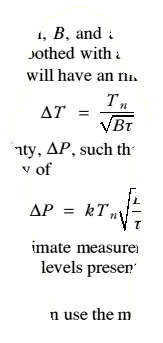Layout and DTP effects.

The TW/EW family are designed to be superb DTP Wordprocessors, not Document Layout applications. This can cause confusion since people have tended to associate DTP with Layout. TW/EW are DTP applications, but they work in a very different way to most ordinary DTP applications. TW/EW provide a structured approach to document production, not one based on conventional frames. This makes them the perfect choice for writing books, letters, reports, etc. However, although different from other DTP apps you can, with ingenuity, achieve most of the effects you can get with conventional frame-based DTP apps. These are based on remembering that TW/EW documents are ‘structured’ and that it is possible to nest structures inside each other. Here we can look at two examples of how this can be useful.
The first example is a way to solve a problem which scientists and engineers encounter fairly often.
How to ensure that constructs like “C++” are not split up or ‘broken’ over a line-ending.
The trick is to make the C++ a block of text inside a structure which is kept whole ˜ i.e. to wrap it up inside an equation. So to do this, you'd type:
<CTRL>[ <CTRL>T C++ <Return> <Return>
Where I've put the spaces in for clarity.
The <CTRL>[ tells TW that you're starting an equation structure, and the <CTRL>T says that you are about to type some plain text into the equation. (If you don't do this, the letters will be made italic to obey the rules of equation typesetting.)
Since TW prevents equations from being ‘broken’ by line endings this ensures that the characters you type next will always be kept together. So you can then type the text followed by two <Return>s. The first to tell TW you've finished the equation text, the second to tell it you've finished the equation.
The second example is when you want to arrange some graphics (diagrams or illustrations) and/or text in a specific way. In a DTP you'd draw out the text/picture frames and then enter into each what you require. At first sight, effects like this seem impossible with TW/EW. However, quite complex layouts can be achieved once you remember that tables, lists, and pictures are all structures so far as TW/EW are concerned. Hence you can assemble a table whose cells are filled with a variety of pictures, lists, etc to get quite an impressive effect.
Consider a simple example where you might want a figure where the caption at the side apparently has more than one paragraph. Normally, pressing <Return> after a paragaph in a figure caption tells TW/EW to end the caption and move out into the body text. However, you can stop this happening if you put a list into the caption and turn off its ‘bullets’ (or item numbering). Now each item in the caption list appears as if it were a distinct paragraph!
In principle, various kinds of structure can be nested down a number of levels to create some very special effects. Not something you'd do on every page of every letter, but very useful sometimes!
 Content and pages maintained by: Jim Lesurf (jcgl@st-and.demon.co.uk)
Content and pages maintained by: Jim Lesurf (jcgl@st-and.demon.co.uk)
using a StrongARM powered RISCOS machine.
